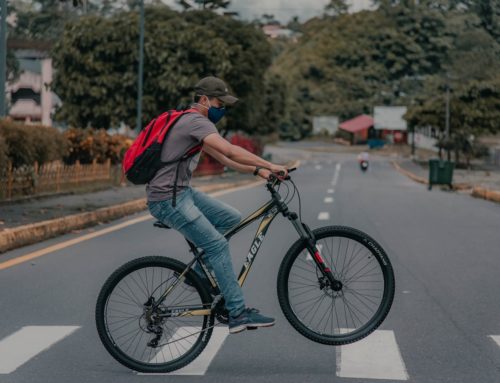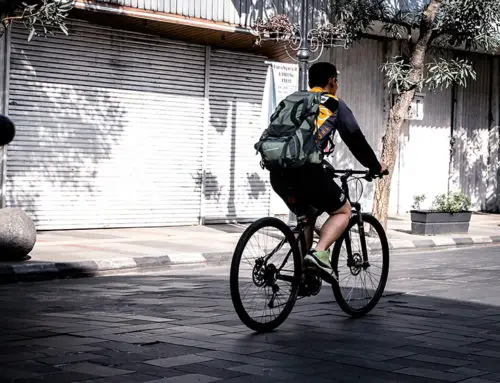Do you enjoy riding so much that even the cold winter weather can’t keep you off the road? You should not let the cold and slippery road stop you from doing what you love. If you love cycling, prepare yourself in advance for the change in weather so that you keep on riding even when the weather changes.
Buy yourself the best clothes for winter cycling, get yourself the best winter bike and if some bike parts need to be changed for winter riding then change them. In short, getting ready for winter will help you avoid any cycling inconveniences.
Select the right ride. Because in winter you expect lots of sand, salt and grit that can destroy suspension and gears, don’t take out your expensive hybrid bike for winter cycling. Instead, you can use an older bike adding fenders, bright lights and winter wheels to make it suitable for cold-weather use.
But first things first.
What Is a Winter Bike?
Simply put, a winter bike is a bike you that you literally ride in the winter. It is relatively inexpensive since you can decide to use an older bike for winter cycling. You simply equip the old bike with mudguards, wider tires and cheap, old wheels and you are good to go.
Fitting the bike with a frame-mounted pump for inevitable punctures, a set of bright lights, a pack of spare tubes and clothes will ease your comfort during the cold weather.
Using your usual hybrid bike may not be the best idea as it will undergo far more wear and tear in the rough winter weather. Imagine how tedious and inconveniencing it would be to use one bike swapping parts on and off.
What Is The Importance Of a Winter Bike?
The winter weather is quite horrible. When we talk of winter what comes to mind is a wet, slippery trail with mud, salt and potholes. It is hard on bikes with black corrosive film causing adverse effects on gears, brakes and the frameset and the bike getting a soggy bottom.
So to avoid exposing your new, solid hybrid bike to such harsh weather conditions, you should consider getting yourself a “bad conditions” bike. The weather can be wet and cold so you need all mechanisms in place to protect yourself and your bike.
To carry on riding even in the winter, consider the basics you require to make your winter bike suitable for cycling.
Which Is The Best Bike For Winter Cycling?
You don’t need to have a special, expensive bike for a winter ride. That’s the beauty of it. A winter bike can be your old road bike, your mountain bike or your cyclo-cross bike. It can be anything.
You don’t need a carbon fiber bike for winter though. You can choose to use one but it will be more costly to buy for that kind of rough weather. You wouldn’t want your $3000 all muddy and mucky. You can choose to use steel-framed hybrids though aluminum frames also make the best winter buys if you decide to get a new one.
You see that old bike that you hang on and stored away when you got your new hybrid? The amazing thing is that you can actually turn it into a winter bike.
You can put together a decent winter machine and spend much less by going second hand. It all boils down to your budget and choice though.
What You Should Look For In a Winter Bike
We’ve already mentioned how the winter weather can be rough on your bike. To protect your bike from its adverse effects you need to fit your bike with mudguards. It reduces mud splashing all over your bike components and shields you from getting wet.
Ensure that your bike has enough space to fit the mudguards and if they need bolts for fastening confirm that your frame can accommodate them.
Also for the wide tires, ensure there is the frameset allows for their fitting and that there’s enough space under brake calipers for the same.
Swapping between your current bike and the winter bike can be uncomfortable if you are not used to it. It is a good idea to check the fitting and riding position to ensure you’re comfortable with your rides.
Winter Bike Components
The key components you’d want to consider in your winter bike are the brakes, the wheels, and the gears. These will determine how well you maneuver on the wet, slippery trails in winter.
Disc brakes are a great choice on winter bikes and are suitable in wet terrain because of the precise and assured braking they offer.
As for the wheels, you should fit your bike with something more solid and robust on your winter bike. As the contact point with all that winter grime, you’d want to protect your wheels from all the coating of muck.
Because your winter bike will be heavier due to the steel frame set and all the equipment it is fitted with, it will go a lot slower than your usual bike. It would be a good idea to fit your winter bike with lower gears as some people do so that you are more comfortable moving it up hill.
Fit your bike with tires that are resistant to punctures and have tread suited for wet weather. Most tire manufacturers offer at least one winter-specific model.
A compact chain set with 50/34-tooth rings coupled to a wide-range cassette with large 28 or 32-tooth low gear may be a good idea. Shimano’s or Campagnolo’s lower or mid-range group sets offer functionality and cost-effective replacement should part start to wear out.
So here are great tips that will help you to carry on riding even in the winter. The secret is in preparing for the rough weather way before it arrives. Start preparing for your winter cycling today.





